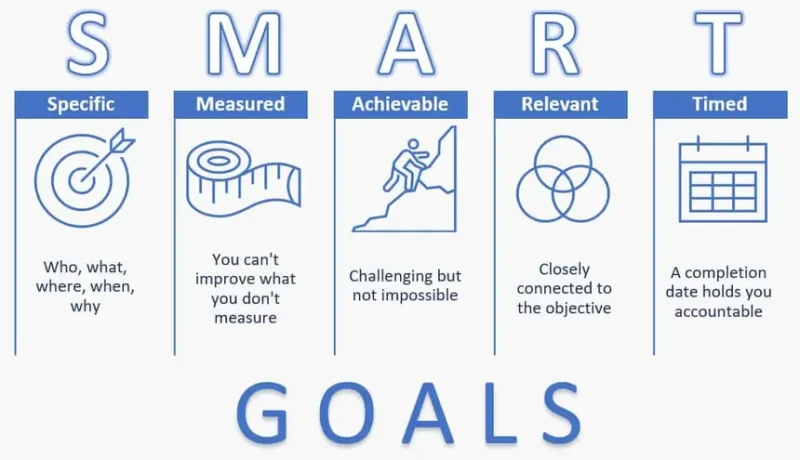
The Ultimate Guide To SMART Goals: Examples and Benefits.
One of the most popular and effective goal-setting systems is the SMART goal system. The figure behind this powerful innovation is George T. Doran and he launched it in 1981. Statistics show that in a random sample space, about 42% of individuals who applied the SMART Goal Setting System were more likely to achieve their goals.
Table Of Content
In this article, we are going to discuss the SMART goal setting system in detail, with real-time examples and benefits of using the system.
George T Doran’s Life changing innovation.
During his time, George noticed that almost all individuals and companies set vague unclear or overly ambitious goals. This motivated his study as he wanted the masses to utilize a framework which would emphasize Clear, measurable with a higher success rate. He named his Framework the SMART Goal Setting System.
What are SMART Goals?
Each letter in the acronym stands for something deep in goal setting and personal development.
1. S – Specific
Dylan realised that many organizations had goals with unclear objectives, i.e the goals lacked specifics making them hard to review, track progress and also determine success. You have to clearly define what you are working towards.
For example; Consier a company that says it wants to boost it sales by end of the year. This is a Goal but its not specific. Instead it can be reframed as “we want to increase the daily sales from 5-10.” Nows a more specific goal to work towards.
2. M – Measurable
The reason we should set our goals with measurable factors is for clear performance evaluation and progress tracking. For example, consider a tourist who says “I want to visit Uganda”. The goal lacks evaluation and progress metrics. Instead, they can say “I want to visit the 6 hills of Kampala.” This is a measurable goal now and its easier to track progress and evaluate the journey.
3. A – Achievable
One of the major questions we should ask ourselves while setting goals is “Is this goal achievable?” You have to make sure you avoid being overly ambiitious when setting goals and be more realistic. Make sure that you have the resources and capability to work on the goal.
An example of an unrealistic goal is “I want to learn fluent German in 2 weeks”. This is practically impossible. Rather, you can say “I am going to take on a German Beginner course for three months.” Now this is a more attainable goal.

4. R – Relevant
When setting goals, ensure they align with your long term objective i.e they have to be relevant in the bigger picture. For example: consider a practicing teacher who wants to go back to college to pursue a course in Fisheries. This can be considered an unparallel goal in the long picture. Instead “they can decide to take on a course like Human Psychology to help them better interactions with their students”.
5. Time-bound
When designing our goals, we have to incorporate time to make them actionable. This involves creating Deadlines for executing tasks and timeframes for achieving different objectives and hitting milestones. This in return creates a sense of urgency and helps our minds focus more on execution than procrastination.
Example: Consider an individual whose goal is “I want to learn how to play chess.” This is a very open goal and can invite procrastination or neglect. But when the person says, “I want to learn how to play chess by December.” This is a clearer time-bound goal that creates a sense of urgency in the person’s life, hence fuel to push towards the goal.
.
Advantages of using the Smart Goal Setting System
1. It breeds clarity and focus
2. Since the progress is trackable and measurable, this tends to boost motivation for working towards the goals. Psychologically, people are motivated by small steps.
3. This system allows both personal and general accountability since you have deadlines you are working within.
4. Also, this system makes it easier to review the goals and their entire objectives and make changes where necessary.
Conclusion
Have you been struggling to set goals? In this article, we have explored the SMART goal setting system in detail. From George T Doran’s motivation behind it, to the meanings of each acronym with real life examples. S for Specific, M for Measurable, A for attainable, R for Relevant and T for timebound. We have also looked at its advantages that make it a reliable Goal Setting Method. Do you think this method is entirely reliable? Share your thoughts in the comment section below.





No Comment! Be the first one.